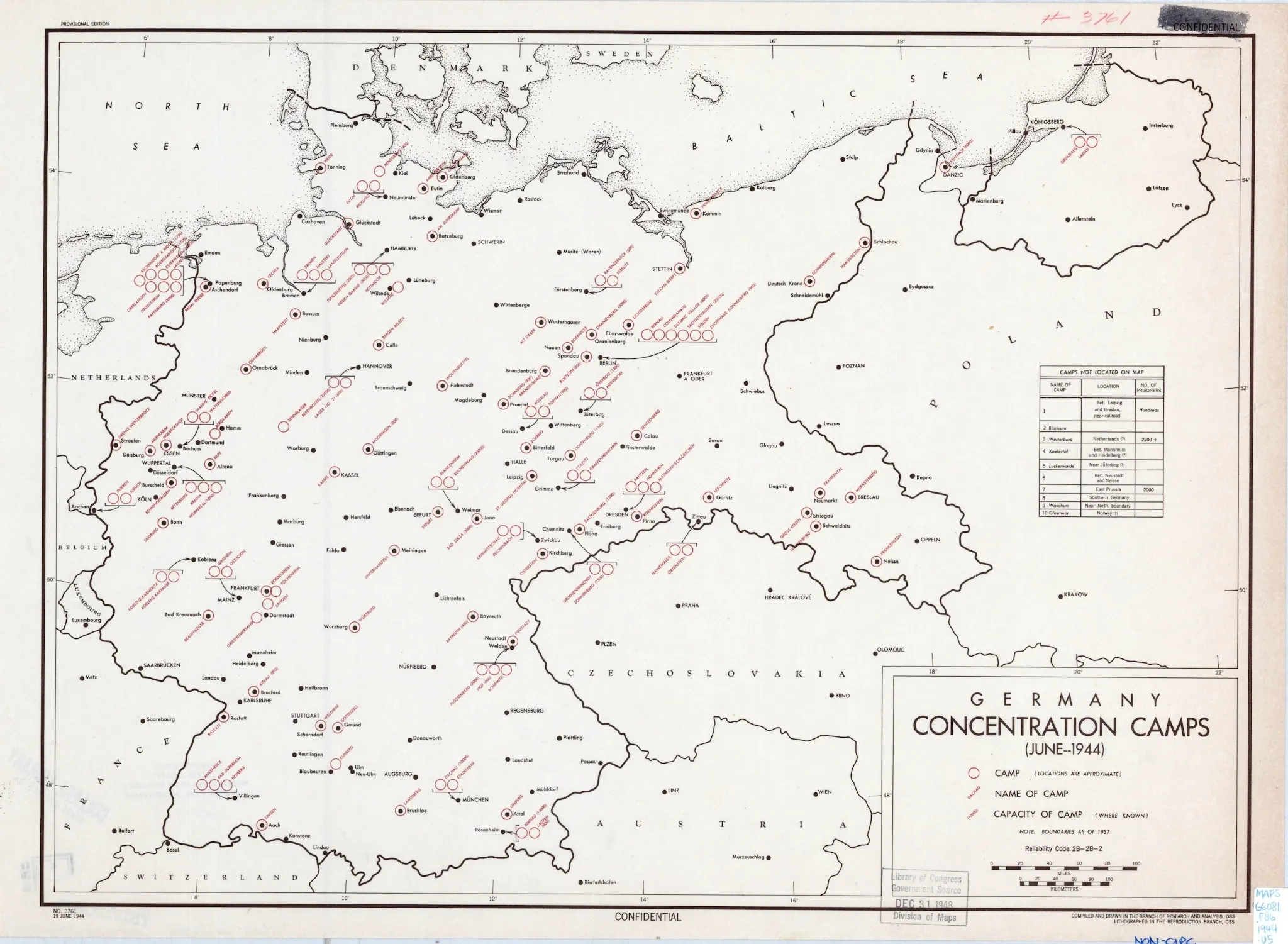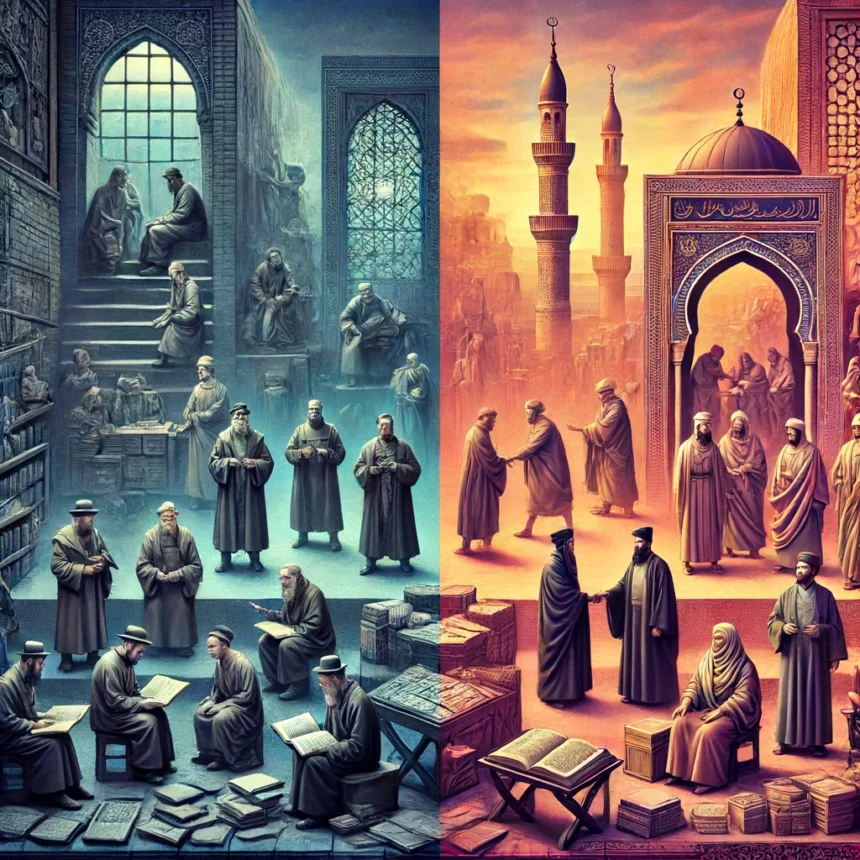Tolerance Under Fire: Impact of Tolerance On Jewish Race
Heavy Cost of Virtues
Judaism, renowned as one of the world’s oldest religions, consistently champions a profound ethical framework deeply aligned with the ideals of modern secularism. Drawing from our previous discussions on the secular principles inherent in Jewish teachings, such as tzedakah (charity), pikuach nefesh (preservation of life), and tikkun olam (repairing the world), this post further examines how these ancient doctrines of tolerance and peace have shaped the Jewish community’s historical narrative and current challenges. Rooted in the Torah and Talmud, these principles not only scaffold a compassionate and just society but also highlight the paradoxical vulnerabilities that arise from such enduring commitments—spanning from the atrocities of the Holocaust to the ongoing threats from contemporary extremist factions. The contrasting demographic trends, notably the stagnant population growth of Jews versus the rapid increases among Palestinian groups, further complicate the geopolitical landscape of Israel, offering a nuanced backdrop to this week’s exploration of Jewish ethical resilience and its impacts on global secularism. As part of our weekly engagement with related topics, we continue this series with a focus on the implications of these dynamics, posted on June 13, 2024.
Role of Tolerance in Jewish Teachings and Minority Status
Judaism, one of the oldest monotheistic religions, emphasizes principles like “Love your neighbor as yourself,” a directive from Leviticus that has resonated through the ages with a profound secular meaning.
The tolerant principles of Jewish teachings, advocating peace and love for one’s neighbor, have undeniably shaped the community’s historical trajectory as perpetual minorities, especially in the wake of cataclysmic events like the destruction of the Second Temple and the extensive diasporas that followed. This leads to a profound, albeit uncomfortable, question: Has the Jewish commitment to peace and tolerance functioned as a kind of historical liability in the face of aggression from neighboring groups? While there is no conclusive evidence to affirmatively answer this question, the annals of history offer circumstantial insights that those who have often embraced aggression—namely some historical Christian and Muslim powers—have not only survived but in many cases thrived.
This observation is not to suggest that a more aggressive stance would have altered Jewish history in a definitively positive manner. Rather, it highlights a recurring theme in the human story: aggressors often write history, while those committed to peace must navigate the challenging waters left in the wake of conflicts initiated by others. The Jewish experience, characterized by both remarkable resilience and profound tragedy, provides a unique lens through which we can examine the complexities of maintaining ethical and peaceful ideals in a world where such principles are not always reciprocated.
Scattered across continents through various diasporas, Jewish communities have faced the monumental task of maintaining their rich religious and cultural identities. Often, they have found themselves enveloped in societies that not only diverged from their values but also, at times, fundamentally disregarded their basic human dignity. This pervasive alienation contributed to the loss of their majority status in their ancestral homelands, rendering them minorities and, in many poignant historical instances, virtually homeless within their own historical territories. This transformation has not only been a test of their resilience but has also highlighted their enduring commitment to preserve their heritage against the tides of adversity.
Tolerance and Tragedy: The Holocaust as a Case Study of Vulnerability
Map of Nazi Concentration Camps, June 1944: This map vividly illustrates the extensive network of concentration camps across Nazi-occupied Europe during World War II. It underscores the systematic scale of the Holocaust and the geographical breadth of the atrocities committed.

The Nazis leveraged these aspects of Jewish culture, misconstruing a history of integration and positive contributions to society as elements of weakness or infiltration. The propaganda machine of the Third Reich painted the Jewish population as both a convenient scapegoat and a dire threat, thereby justifying their actions to the broader populace under perverse and twisted moral logics. This systematic dehumanization turned neighbors against neighbors and made bystanders of many, as the infrastructure of genocide—ghettos, concentration camps, and killing fields—was methodically implemented across Europe.
Moreover, the tragedy of the Holocaust extended far beyond the staggering number of lives lost; it also represented the profound loss of potential embodied by each individual—scholars, artists, scientists, and community leaders whose contributions could have enriched the world, yet whose lives and legacies were cruelly extinguished. The Holocaust serves as a stark reminder of how the principles of tolerance and ethical integrity can be disastrously manipulated in a culture dominated by hatred and bigotry. This historical atrocity underscores the lethal consequences faced by communities that are peace-loving and non-aggressive, particularly when they are surrounded by those who exploit these virtues for oppression and cruelty. It challenges us to remain vigilant, to recognize and combat the signs of such monstrous injustice in any form, at any time.
Historic Artifact from Kamp Vught:
Pictured is a wheelbarrow used during World War II to transport deceased prisoners within the concentration camp. This poignant artifact stands as a stark reminder of the daily realities of camp life and the cruel conditions endured by prisoners.

The dire consequences of the Holocaust compel us to reflect on the vulnerability of peaceful communities in hostile environments. They urge us to ensure that the international community better recognizes and acts against the potential exploitation and victimization of those who live by principles of peace and tolerance. By learning from this somber chapter in history, we must strive to protect and value the inherent dignity of all human beings, ensuring that no community is ever targeted for its ethical stance or peaceful disposition again.
Contemporary Challenges: Balancing Tolerance with Security Amid Jihad and Geopolitical Tensions
Today, Jewish communities worldwide continue to navigate significant threats, emphasizing the challenge of maintaining tolerance in regions marked by deep-seated conflicts. The rise of jihadist movements has particularly intensified the peril for Jewish populations, both within Israel and in the broader diaspora. This persistent threat underscores a critical point: the historical and inherent values of tolerance embedded in Jewish teachings, along with their secular interpretations advocating for peace and coexistence, are often perceived by aggressors as vulnerabilities. In regions where such principles are disregarded or outright opposed, these traits can tragically mark Jewish communities as targets. This scenario vividly illustrates the ongoing global challenge—how to protect those who champion tolerance and peace in areas where such values are viewed with hostility or used as leverage in conflicts.
Population Dynamics: Tolerance in the Face of Demographic Shifts
The demographic trends in Israel and the Palestinian territories reveal a complex interplay of tolerance, growth, and geopolitical tension, characterized by significant population growth in both Jewish and Muslim communities, albeit at different rates. Since 1950, the global Jewish population has increased from approximately 11.5 million to 16.78 million, with Israel’s Jewish population growing from 1.2 million to 6.34 million, largely due to approximately 2.3 million immigrants seeking a homeland where they could secure their cultural and religious identity. This growth reflects not only natural population increases but also significant waves of immigration and relatively stable birth rates.
In stark contrast, the Muslim population in Palestine has not only grown significantly but has shown a distinct demographic pattern characterized by a high percentage of the population being under the age of 25. This youthful demographic is indicative of what some observers might describe as a ‘children machine,’ where high birth rates are contributing to rapid population growth. Such demographic trends present both challenges and opportunities for the region, as a younger population could mean a vibrant future but also raises concerns about the sustainability of resources and economic opportunities.

The demographic trends in Israel and the Palestinian territories reveal a complex interplay of tolerance, growth, and geopolitical tension, characterized by significant population growth in both Jewish and Muslim communities, albeit at different rates. Since 1950, the global Jewish population has increased from approximately 11.5 million to 16.78 million, with Israel’s Jewish population growing from 1.2 million to 6.34 million, largely due to approximately 2.3 million immigrants seeking a homeland where they could secure their cultural and religious identity. This growth reflects not only natural population increases but also significant waves of immigration and relatively stable birth rates.
In contrast, the Muslim population in Palestine has witnessed a more substantial surge, growing from around 945,000 in 1950 to approximately 5.27 million today. This rapid demographic expansion is indicative of higher birth rates and the transitions typically seen in less developed regions, where health outcomes improve and mortality rates decline.
These contrasting demographic trends are reshaping the geopolitical landscape of the region. For Israel, the challenge is to manage a diverse and expanding population within its borders while ensuring security and fostering coexistence. This demographic reality also impacts political discussions concerning rights, statehood, and sovereignty, with population figures significantly influencing both policy and international negotiations.
Moreover, the historical and ongoing migration of Jews to Israel, driven by the aspiration for a secure and sovereign state, has dramatically altered the region’s demographic and political contours. Concurrently, the considerable growth of the Muslim population in Palestine highlights the urgent need for sustainable and fair resolutions to the enduring conflicts, taking into account the demographic realities on the ground.
Understanding these dynamic population shifts is vital for grasping the current and future state of affairs in Israel and the broader Middle East. It underscores the critical intersection of demography, politics, and peace efforts in the region, emphasizing the need for informed, compassionate, and forward-thinking approaches to navigating these complex challenges.
Global Lessons on Tolerance from the Jewish Experience
The experiences of the Jewish community enrich the global dialogue about the power and pitfalls of tolerance among minorities. Similar patterns can be observed in other minority groups worldwide, where tolerance and a principled stance on peace and ethical behavior have sometimes led to persecution or exploitation, rather than protection and respect by majority groups or governing powers.
Embracing Tolerance: A Path Forward
The historical and ongoing challenges faced by the Jewish community underscore a complex dialogue between maintaining a commitment to ethical teachings and confronting the harsh realities of a world where such ideals are not always upheld. As we reflect on the secular meaning imbued in Jewish teachings, it becomes imperative to foster a more inclusive and protective global environment that honors and safeguards these values. Grasping these dynamics is crucial not just for supporting Jewish communities but for advocating for all minorities where tolerance shapes their predicaments.
This blog advocates for a renewed commitment to understanding and protecting the nuanced role of tolerance in vulnerable communities, ensuring that their adherence to peace and ethical conduct becomes a strength, not a susceptibility, in the face of adversity.
Feature Image: Click here to view the image.
#ReligiousTolerance #SecularValues #InterfaithDialogue #JewishTeachings #EthicalLiving
References
Online Sources
- Yad Vashem – The World Holocaust Remembrance Center
- Website: Yad Vashem
- This site provides extensive resources on the Holocaust, including personal stories, historical data, and expert analyses.
- Jewish Virtual Library
- Website: Jewish Virtual Library
- A comprehensive online encyclopedia covering various aspects of Jewish history, culture, and religion, including issues related to demographics and geopolitical conflicts.
- The United States Holocaust Memorial Museum
- Website: USHMM
- Offers detailed articles, photographs, and oral histories about the Holocaust, which can be used to understand the factors leading up to and including the event.
- Institute for the Study of Global Antisemitism and Policy (ISGAP)
- Website: ISGAP
- Provides research and analysis on antisemitism and extremism.
Offline Sources
- “A History of the Jews” by Paul Johnson
- An exhaustive narrative covering the history of the Jewish people from ancient times to the modern era. Available in bookstores and libraries.
- “The Holocaust: A New History” by Laurence Rees
- This book offers a comprehensive and detailed account of the Holocaust, drawing on extensive research and interviews with survivors. Available in bookstores and libraries.
- “The War Against the Jews: 1933–1945” by Lucy S. Dawidowicz
- Examines the Holocaust from the Nazis’ rise to power up to the end of World War II, with a focus on ideological and logistical aspects of the genocide.
- “The Ethnic Cleansing of Palestine” by Ilan Pappé
- Provides a critical examination of the events leading up to and during the 1948 Palestine War, relevant for understanding the historical context of Israeli-Palestinian tensions.
- “Jews, God, and History” by Max I. Dimont
- This book offers a non-traditional approach to Jewish history, highlighting the interaction between Jewish thought and the broader historical dynamics.



Leave a Reply